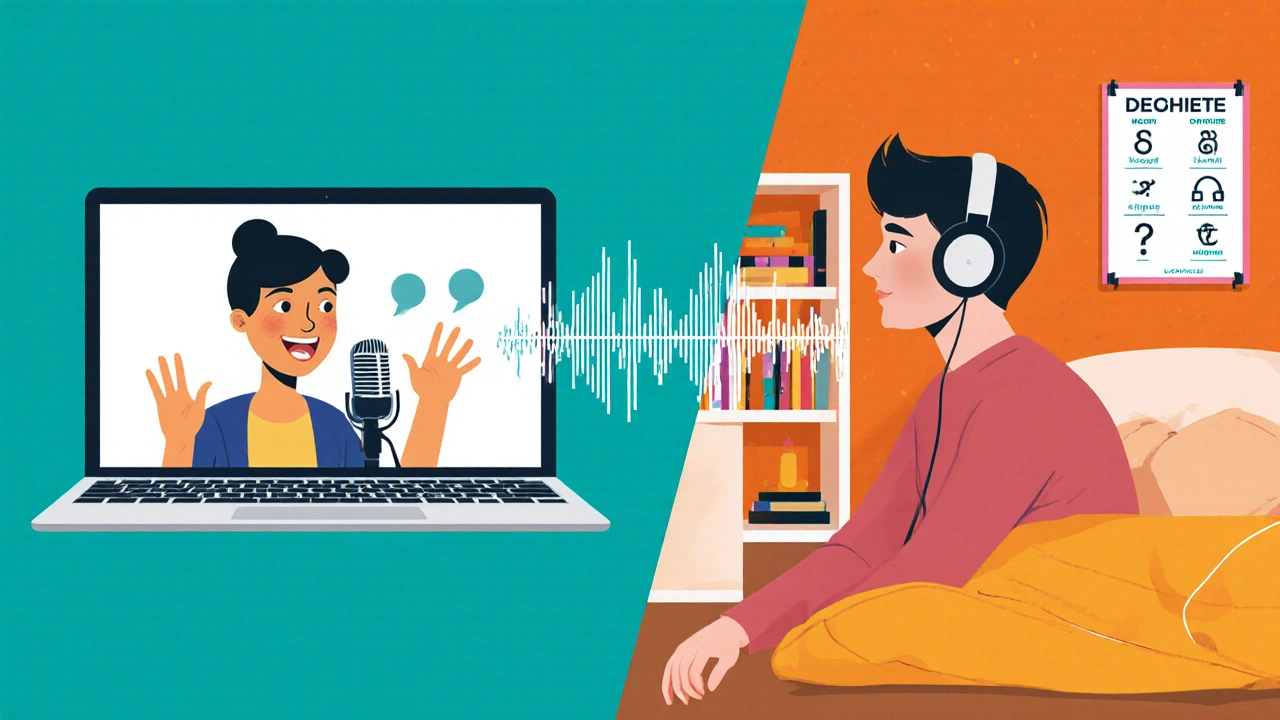Daily Fluency Practice Checklist
Your Daily Fluency Routine
Key Takeaways
- Fluency grows from focused, short‑duration practice every day.
- Combine listening, speaking, and thinking exercises for balanced growth.
- Use real‑life interaction (language exchange, shadowing) to build confidence faster.
- Track progress with a simple checklist and adjust effort as needed.
- Manage anxiety by rehearsing in low‑stakes environments before moving to bigger audiences.
When you aim for English fluency is the ability to speak English smoothly, accurately, and with confidence, the right habits make all the difference. In this guide you’ll discover practical steps you can start today, no matter whether you’re a beginner or have been speaking for years. The focus is on actions you can fit into a busy schedule while still seeing measurable improvement.
What "fluency" Really Means
Most learners picture fluency as sounding like a native speaker. That’s a nice goal, but it’s too vague for daily work. Fluency breaks down into three measurable parts:
- Speed - how quickly you can form sentences without long pauses.
- Accuracy - using grammar and vocabulary correctly.
- Confidence - feeling comfortable enough to keep talking even if you make mistakes.
When all three line up, the conversation flows naturally - that’s the sweet spot of true fluency.
Common Barriers and How to Overcome Them
Before diving into techniques, let’s address the obstacles that trip up most learners.
- Speech anxiety: Fear of sounding stupid makes you freeze.
- Limited vocabulary chunks: Relying on isolated words forces you to pause.
- Lack of feedback: Without correction you keep repeating errors.
- Passive listening: Watching movies without active engagement doesn’t translate to speaking.
Each barrier has a concrete antidote, which we will embed inside the practice toolkit.
Proven Practice Techniques
Below is a quick‑reference table that compares the most effective methods for building spoken skills. Choose the one that matches your schedule and learning style.
| Method | Time per Day | Focus Area | Best For |
|---|---|---|---|
| Shadowing | 10‑15 min | Pronunciation & rhythm | Auditory learners, early intermediate |
| Language Exchange | 30‑45 min | Real‑time interaction | Those who need confidence in conversation |
| Pronunciation Drills | 5‑10 min | Sound accuracy | Accent reduction seekers |
| Self‑Recording & Playback | 10‑20 min | Self‑feedback loop | Independent learners |
1. Shadowing Technique
Shadowing means listening to a short native‑speaker audio (30‑60 seconds) and repeating it word‑for‑word, trying to match rhythm, intonation, and speed. It forces you to train the mouth muscles while your brain processes the language in real time.
Steps:
- Pick a clip - news headline, TED Talk intro, or a podcast segment.
- Play once without speaking. Note any unfamiliar words.
- Play again and speak along, mimicking every pause.
- Record yourself on the third pass, then compare with the original.
Do this daily and you’ll notice smoother sentence flow within weeks.
2. Language Exchange (Talk Partner)
Finding a native speaker who wants to learn your language creates a win‑win. Platforms like Tandem, HelloTalk, or local community groups make matching easy.
Best practice:
- Set a clear agenda - 10 minutes small talk, 15 minutes topic discussion, 5 minutes feedback.
- Use a "language‑only" rule for the target segment.
- Ask your partner to correct you on the spot or note errors for later review.
Consistent exchanges reduce anxiety because you become accustomed to real‑world flow.
3. Pronunciation Drills
Target troublesome sounds (th, r, l, vowel length) with minimal‑pair exercises. For example, practice "ship" vs. "sheep" until you can hear the difference.
Use tools like Forvo or the IPA chart to see mouth placement. Combine with the "mirror method" - watch yourself speak in a mirror to align mouth shape.
4. Self‑Recording & Playback (Feedback Loop)
Record a 2‑minute monologue on any topic (your day, a movie review). Then listen with a checklist:
- Did I pause more than twice per sentence?
- Any repeated grammar mistakes?
- Was my intonation flat?
Mark the issues, re‑record, and compare. The loop builds self‑awareness without needing a teacher.

Building Confidence While Speaking
Confidence isn’t just a mindset; it’s a skill you can train.
- Start small: Speak to yourself in the mirror for 2 minutes before moving to a partner.
- Use "thinking aloud": While reading, narrate your thought process in English. This bridges inner monologue and spoken output.
- Celebrate micro‑wins: Every time you finish a conversation without switching to your native language, note it in a journal.
- Adopt a growth script: Replace "I can’t" with "I’m working on" to rewire anxiety.
Gradual exposure reduces the fear response. After a few weeks of low‑stakes practice, stepping onto a bigger stage feels natural.
Daily Routine Checklist for Speaking Success
Stick to a 30‑minute routine that touches all pillars of fluency.
- 5 min - Warm‑up: Tongue twisters or basic shadowing.
- 10 min - Focused Practice: Choose one method from the table (shadowing, drills, or recording).
- 10 min - Real Interaction: Language exchange, speaking club, or narrating daily activities.
- 5 min - Review: Note errors, update the checklist, set a mini‑goal for tomorrow.
Consistency beats intensity. A short, daily habit beats a marathon session once a month.
Common Mistakes to Avoid
- Over‑relying on subtitles: They keep you in a passive mode.
- Skipping feedback: Self‑correction is hard; a partner or app with speech recognition helps.
- Focusing only on grammar: You’ll sound precise but sound‑less.
- Neglecting pronunciation: Incorrect sounds become entrenched.
Keep the balance: grammar, vocab, pronunciation, and interaction all matter.

When to Seek Professional Help
If after 8‑10 weeks you see little progress, consider a qualified tutor. Look for teachers who:
- Provide corrective feedback in real time.
- Use a structured curriculum that includes speaking drills.
- Offer recordings of sessions for later review.
Even a few paid lessons can jump‑start a plateau.
Wrapping Up
The path to speaking English more fluently and confidently is a series of small, repeatable actions. By mixing listening, shadowing, real conversations, and self‑review, you train every part of the fluency equation. Remember to track your progress, celebrate tiny wins, and adjust the routine as you grow. With daily commitment, you’ll notice smoother speech, fewer pauses, and a boost in confidence that spills over into work, travel, and social life.
Frequently Asked Questions
How long does it take to become fluent?
Fluency timelines vary, but most learners who practice 30 minutes daily see noticeable improvement in 3‑4 months. Reaching native‑like speed can take 1‑2 years, depending on exposure.
Is it better to study alone or with a partner?
Both have value. Solo practice builds foundation, while a partner provides real‑time feedback and reduces anxiety. A mix yields the fastest gains.
What apps are useful for shadowing?
Try YouTube’s speed‑control feature, the FluentU app, or the free podcast “6 Minute English” from BBC. All let you loop short clips.
How can I stop feeling nervous before speaking?
Use the "3‑minute warm‑up" routine: tongue twisters, deep breaths, and a quick self‑recording. This signals your brain that you’re prepared.
Do I need a native‑speaker teacher?
Not strictly. Qualified non‑native teachers can correct errors just as well. Choose someone who offers consistent feedback and recordings.



